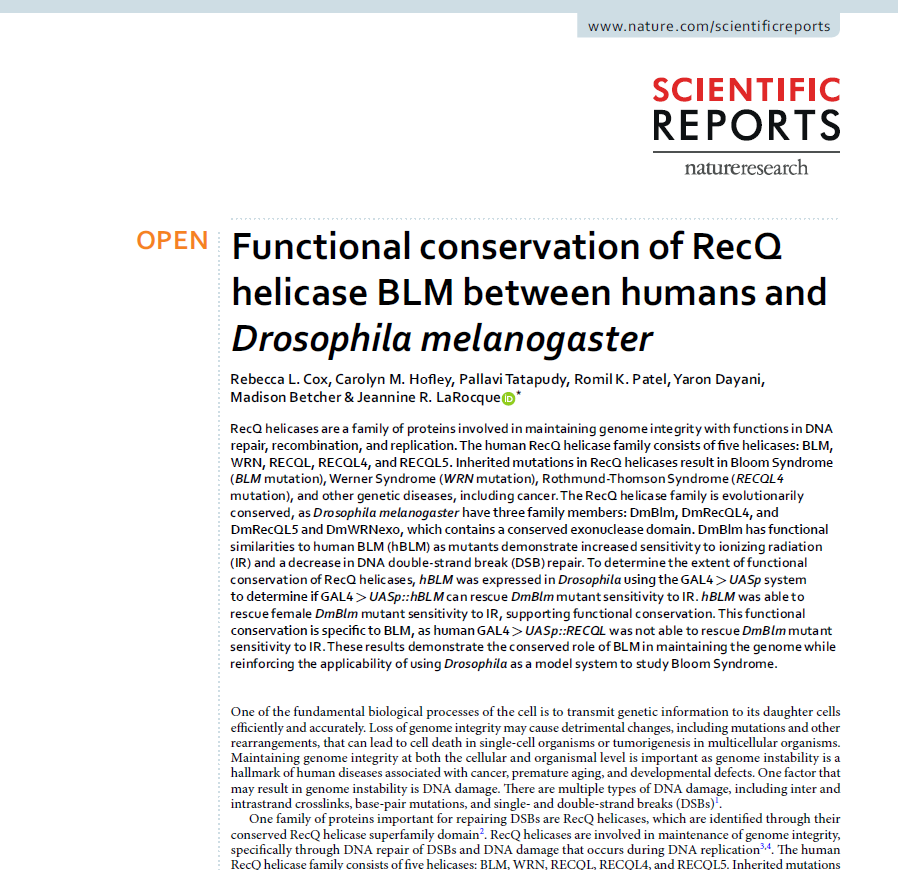
- December 23, 2019
Functional conservation of RecQ helicase BLM between humans and Drosophila melanogaster
Rebecca L. Cox, Carolyn M. Hofley, Pallavi Tatapudy, Romil K. Patel, Yaron Dayani, Madison Betcher & Jeannine R. LaRocque| Department of Human Science, Georgetown University Medical Center, Washington, DC, 20057, USA | 2019 |Scientific Reports; 9:17527
RecQ helicases are proteins involved in DNA repair of double-stranded breaks, DNA recombination and DNA replication. The human RecQ helicase family consists of BLM, WRN, RECQl, RECQl4 and RECGL5, where inherited mutations results in Bloom Syndrome, Werner Syndrome, Rothmund-Thomson Syndrome and other genetic diseases. It has been shown that the RecQ helicase family is evolutionarily conserved, for example Drosophila melanogaster have three family members (DmNlm, DmRecQL4 and DmRecQL5) that exhibit similar functionalities. The aim of the study was to determine the extent of functional conservation of RecQ helicases. hBLM was expressed in Drosophila using the GAL4 > UASp system to determine if GAL4 > UASp::hBLM can rescue DmBlm mutant sensitivity to ionizing radiation (IR). Gene expression was done by quantitative real-time PCR using Mic Real-Time PCR. hBLM was able to rescue female DmBlm mutant sensitivity to IR, supporting functional conservation.
Read More